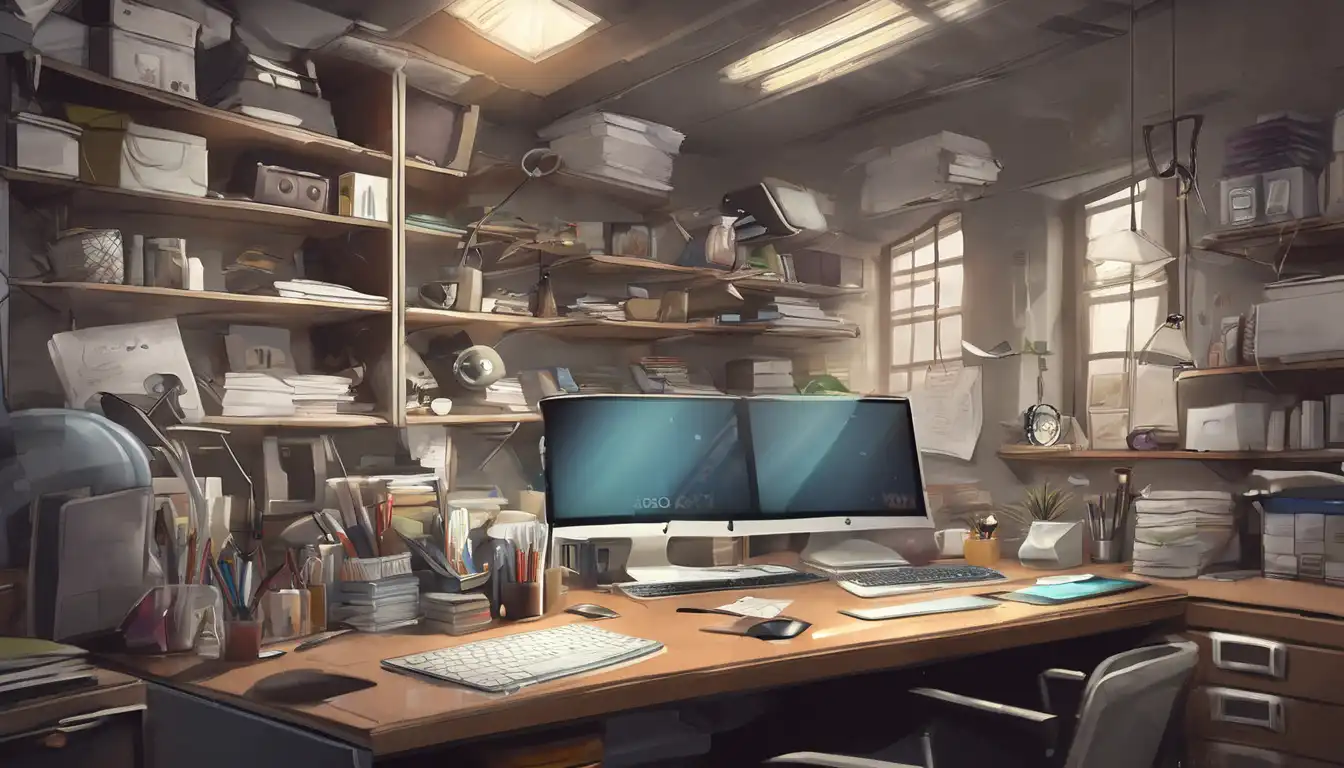Why Your Workspace Matters More Than You Think
Your physical environment plays a crucial role in your ability to concentrate and maintain productivity. Research shows that a well-organized workspace can boost focus by up to 32% and reduce stress levels significantly. Whether you work from home or in a traditional office setting, creating an environment that supports deep work is essential for achieving your professional goals.
The Psychology Behind Workspace Organization
Clutter isn't just a physical problem—it's a mental one. Studies from Princeton University Neuroscience Institute reveal that visual clutter competes for your attention, reducing your ability to focus. When your workspace is disorganized, your brain has to work harder to filter out distractions, leaving less cognitive capacity for the tasks that matter most.
How Clutter Affects Your Brain
• Multiple stimuli compete for neural resources
• Decision fatigue increases with visual noise
• Stress hormones rise in chaotic environments
• Working memory becomes overloaded
7 Essential Steps to Organize Your Workspace
1. Start with a Complete Reset
Begin by clearing everything from your desk. This blank slate approach allows you to be intentional about what returns to your workspace. Sort items into three categories: essential, occasional use, and unnecessary. Be ruthless—if you haven't used something in the past month, it probably doesn't belong on your primary work surface.
2. Implement the Zones Method
Divide your workspace into functional zones based on your workflow. Common zones include:
• Primary work zone (computer, keyboard, mouse)
• Reference zone (notebooks, documents in use)
• Supply zone (pens, stapler, other essentials)
• Personal zone (photos, plants, personal items)
3. Optimize Your Digital Environment
Physical clutter is only half the battle. Digital clutter can be equally distracting. Organize your computer desktop, create a logical folder structure, and close unnecessary browser tabs. Consider using digital minimalism techniques to maintain focus during work sessions.
4. Master Cable Management
Tangled cables create visual chaos and make it difficult to keep your space clean. Use cable organizers, zip ties, or adhesive clips to route cables neatly. Label each cable end to make identification easy when you need to unplug or rearrange equipment.
5. Create an Ergonomic Setup
Comfort directly impacts your ability to focus. Ensure your chair supports proper posture, your monitor is at eye level, and your keyboard and mouse are positioned to prevent strain. An ergonomic workspace reduces physical discomfort, allowing you to concentrate for longer periods.
6. Implement the One-Touch Rule
Handle each item only once. When you pick up a document, decide immediately whether to act on it, file it, or discard it. This prevents paper piles from accumulating and maintains your organized system. For digital files, apply the same principle to emails and documents.
7. Establish Daily Reset Rituals
Spend the last 5-10 minutes of each workday resetting your workspace. Return items to their designated homes, clear your desk surface, and prepare for the next day. This simple habit ensures you start each morning with a clean, organized environment.
Advanced Organization Strategies
Color Coding Systems
Use color to create visual organization cues. Assign specific colors to different projects, clients, or types of tasks. This system helps your brain quickly identify what you're working on and reduces time spent searching for materials.
Vertical Space Utilization
Don't neglect your walls. Install shelves, whiteboards, or pegboards to get items off your desk surface while keeping them accessible. Vertical storage solutions can dramatically increase your available workspace without expanding your footprint.
Minimalist Approach
Adopt a minimalist mindset by regularly evaluating what truly needs to be in your workspace. The fewer items you have, the fewer distractions you'll face. This approach aligns well with deep work principles that emphasize eliminating non-essential stimuli.
Maintaining Your Organized Workspace
Organization isn't a one-time event—it's an ongoing process. Schedule weekly reviews to assess what's working and what needs adjustment. Be flexible and willing to adapt your system as your work requirements change. Regular maintenance prevents small messes from becoming overwhelming clutter.
Weekly Checklist for Workspace Maintenance
• Wipe down all surfaces
• Sort through paper accumulation
• Check cable organization
• Update digital file organization
• Assess what items need relocation
The Impact on Your Work Quality
An organized workspace does more than just look nice—it fundamentally changes how you work. You'll experience fewer interruptions, make decisions more quickly, and complete tasks with greater accuracy. The time you invest in organization pays dividends through improved efficiency and reduced mental fatigue.
Measuring Your Progress
Track how organization affects your work. Note changes in:
• Time spent searching for items
• Frequency of distractions
• Quality of work output
• Overall stress levels
After implementing these strategies, most people report saving 30-60 minutes daily that would otherwise be wasted on searching and reorganizing. This reclaimed time can be redirected toward more meaningful work or personal well-being activities.
Conclusion: Your Path to Better Focus
Transforming your workspace into a focus-enhancing environment requires intention and consistency, but the rewards are substantial. By implementing these science-backed organization strategies, you'll create a space that supports rather than hinders your concentration. Remember that the goal isn't perfection—it's creating a system that works for your unique needs and helps you achieve your professional objectives with greater ease and efficiency.
Start small with one strategy today, and gradually build toward a completely optimized workspace. Your future focused self will thank you for the investment in creating an environment where productivity thrives and distractions fade away.
